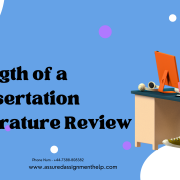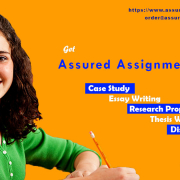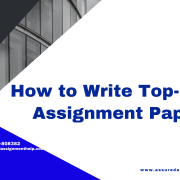Length: 2000 words ± 10% (including executive summary, introduction, heading and subheadings, recommendations and conclusion but excluding title page, reference list and appendixes)
Reference Style: APA Style https://www.cqu.edu.au/?a=14033
Document type: MS Word document only, do not submit in PDF format
Objectives
This assessment item relates to course learning outcomes numbers 1, 2, 3 and 5.
Purpose
The primary purpose of this assessment is to assist students to develop skills in the use of HRM planning, theories and models in the analysis of a typical business situation that has organisational change and downsizing. The assignment requires you to analyse the current situation, identify and specify the organisational issues, and suggest practical and probable solutions. The secondary purpose of this assignment is to give students the opportunity to
enhance their research, analysis, critical thinking and written communication skills; particularly in the areas of argument development and report writing.
Before starting this assessment, please read the marking criteria (at the end of this document) and refer to Academic Learning Centre and CQU Library Help pages for the guidelines regarding writing academic reports. The Moodle course website also provides useful information in regard to the development of this assessment task. You should always check the course website for course-specific instructions, which may be updated continuously.
Description
Assessment task 2 requires the writing of a Business Report. The report should be designed as a management document that can be used to implement recommended changes. It should include a comprehensive analysis of the current situation using HRM theory, models and frameworks. The report should clearly explain the various options available and analyse the consequences of these. Students are expected to engage in extensive research within the
academic literature relating to human resource management. The assignment is based on a case study that describes the impact of contextual change on business activities. The purpose of the report is to identify the roles of change in organisational structure and other challenges in managing dynamic organisations. Students are expected to engage in extensive research
within the academic literature relating to organisational structure, HRM planning and downsizing analysis.
Format of the Report:
The Business Report should include following sections and formatted as mentioned below:
Word count and Format: All academic writing is subject to word limits. A general rule of thumb is 10% above or below the recommended word count in accepted. That means, the Business Report should ideally be written within 2200 words. Not all sections of the Business Report attracts word count. Word count includes words in Executive Summary, Introduction, Headings and sub headings, Recommendations and Conclusions. Please check word count for the above mentioned sections before submission.
The writing style and layout should be consistent throughout the document. Creating a consistent and professional looking document is not difficult. Failure to do so is an indication that the writer is either careless, or places no importance on the work being undertaken.
Copy Detection Software:
Copy detection software (TurnitIn) is used in this course and work found in contravention of the copying and plagiarism rules will be investigated. Penalties apply in the case of proven instances of copying, plagiarism and academic dishonesty. For more details about the penalty, refer to the marking criteria for each assessment task
Please check the following links to know more about TurnitIn:
http://turnitin.com/en_us/training/student-training/viewing-originality-reports
http://turnitin.com/en_us/training/student-training/about-originalitycheck
TurnitIn is only a tool and judgement needs to be used when you view your Originality
Report. TurnitIn does not make a judgement as to what is referenced properly, it highlights the non-original material in a piece of work. You should use the similarity score as a guide only and must then check the originality report to determine whether or not changes need to be made to the assignment. You may have unwillingly forgotten to reference a quote or you may need to consider paraphrasing if the amount of quoted material is too high. Before
submitting for grading of assignments, you are allowed to submit your assignments as draft in Moodle site (as many time as you want) and wait for TurnitIn to generate a similarity report. Please review the similarity report carefully, check copied or plagiarised sections and rewrite those sections to avoid penalty.
Different Sections of the Business Report:
Title page: The title page of a report should be brief and precise. It contains the following information: the name of the report, who prepared the report, for whom the report was prepared, the nature of the report, the date the report was prepared.
Executive summary (ideally be approx. 100 words): The executive summary is a one page (or less) statement of a report’s purpose, findings and recommendations. It is more detailed than a couple of sentences, enabling the reader to see the “big picture” without getting absorbed in technicalities. According to Putnis and Petelin (1999, cited in Dwyer 2006, p. 469), it is ‘an acceptable substitute for the whole report’. Referencing is not used in the executive summary.
Table of contents: List the page numbers for headings and sub headings of the report.
Introduction (ideally be approx. 100 words): The introduction consists of two or three paragraphs in which the aims, structure and methodology of the report are outlined. It states clearly the purpose or main task of the report and what the reader can expect to obtain from it. Important background information is included, such as why the report was initiated in the first place. Please include a thesis statement that clearly mentions the main purpose of the report. The introduction may mention previous reports and research projects if the present report builds on, or challenges them.
Headings and Subheadings (ideally be approx. 1900 to 2100 words): The content of the report’s main body should be formatted into logical sections by topic. It may be appropriate to format into sections according to major topics and then outline logical sub-topics with sub-sections (if needed). The sub-sections may or may not be indented to make them easily identified, depending on the writer’s preference. Each section should be preceded by a heading, and each sub-section should have a subheading. Different headings and sub headings can be used to organise arguments, answers to the assessment questions. Please use headings and sub headings logically to reflect your answers to questions clearly. This section is also called main body of the assignment should present the evidence you have collected to support your arguments for the questions (with headings and sub headings). This is also the section of the report which will be analysed thoroughly by the examiner, so please prepare this section carefully. Some general guidelines also include: all figures (diagrams, pictures, drawings, charts, and so forth), and tables, should be labelled and numbered, do not repeat ideas, arguments in subsequent headings and sub headings, try to maintain equal lengths for all headings and sub headings which also ensures that you have answered all questions equally. Please note that all answers to the assessment questions should be based on arguments, answers developed through research findings (references).
Recommendations (if needed) (ideally be approx. 100 words): Only include if the questions asked in the assessment require recommendations. This section can be in bullet format or descriptive.
Conclusion (ideally be approx. 100 words): The conclusion is a brief section (less than a page) in which the writer analyses the significance of the report’s findings and reiterates the main points of the report. These findings must derive logically from material presented in the report. A generalisation is then drawn from the specific findings of the research. New information is not included in the conclusion. Information in a conclusion should not be presented as dot points.
References: A Reference List is a listing of all external resources that were consulted and mentioned during research for the report, and information from which is directly referred to in the text of the report. It is strongly recommended to avoid secondary referencing in assignments. Such as, try to avoid too many mention of Cited in …….. Ricardo (2005) mentioned that ……. You are supposed to read the references before mentioning in reference list. There are a number of different styles of referencing used in academic literature. As mentioned before, please use APA referencing style for reference list. Here is the CQUniversity Australia library link to APA referencing
style: https://www.cqu.edu.au/?a=14033 The word count of the Reference List does not contribute towards the word count of the report.
Appendices (if needed): An appendix is a section containing large amounts of data or information pertaining to a specific topic that has been collected from an external source. It may have been collected from a reference source during preparation of the report, or have been generated from experiments or from field work. It may, for instance, be the technical description of a piece of equipment, or the calibration data of a measurement instrument.
CQUniversity Australia Library has a developed a webpage with generic information on Business Report and can be found at http://libguides.library.cqu.edu.au/writing-reports
Details
The assessment item is based on the case study titled The Perils of Downsizing (pg. 237-238 of textbook: Human Resource Management in Australia (5th Ed.) by Kramar, Bartram, De Cieri, Noe, Hollenbeck, Gerhart & Wright, McGraw-Hill Australia). You should read, and carefully analyse, the case and respond to the issues presented at the end of the case study within the context of a business report. You are required to support your argument with appropriate theoretical discussion and references.
The assignment should be a properly constructed business report. The assignment should contain a coherent, critical review of the academic literature on HRM topics in question. The literature review should be integrated into the assignment and not be a separate section. A reference list formatted in the prescribed APA style is compulsory. Further information regarding formatting of assignments and other information is available at https://www.cqu.edu.au/student-life/services-and-facilites/referencing
This assessment item involves researching your assigned topic to enhance your understanding of and utilisation of academic literature. Whilst you should AVOID using only the textbook, the prescribed textbook for the course should be cited in regard to broad HRM principles. You will be expected to present information and evidence from, and cite, at least twelve (12) relevant peer reviewed journal articles (absolute minimum requirement). These do not include other academic references such as books, conference papers, and book chapters and so on. Although you can cite these other academic references in your report, they will not be counted as part of the 12 journal articles. Refer to your recommended readings for examples of academic journals. While you can cite these recommended references, it is expected that you find twelve (12) peer reviewed journal articles not listed in the course materials. The quality and number of citations will demonstrate the breadth and depth of the literature used to support your arguments. Your marker is interested in the analysis that you have developed from YOUR review of the literature and how well you use the literature to discuss the topic. AVOID presenting a descriptive account ONLY of your readings. What is required in this assessment is a critical evaluation of the academic literature as it relates to the specific details of the case study. Your marker is also interested in the conclusions that you reach by evaluating the literature and the case scenario.
Tasks
Case Study: The Perils of Downsizing (pg. 237-238 of the textbook)
Deeply concerned about the level of angst or anxiety and uncertainty among existing staff, the Vice Chancellor tried to reassure employees about the future direction of the university. However, the Vice Chancellor is convinced that more needs to be done and has hired you to provide the director of human resources with some recommendations to improve planning for the university’s human resource needs. Based on the above mentioned case study write a
report that answers all the three questions:
- What are the external factors that are affecting the labour profile needed by the university?
- Identify and critically discuss the ways that the HR planning function within the university could provide better information to university decision makers.
- Given the information in this case, what are the advantages and disadvantages of the downsizing of staff numbers at the university?











